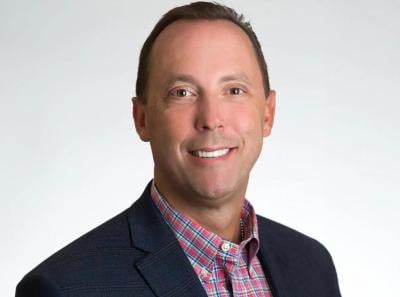After Pfizer let limited patient interest get the best of its hemophilia B gene therapy ambitions and discontinued Beqvez, CSL Behring naturally faced the question of whether it can hold its ground with Hemgenix.
Hemgenix’s own struggles became obvious to CSL about a year into its launch. As the first hemophilia gene therapy approved by the FDA in November 2022, Hemgenix only treated 12 patients during the 12 months that ended in June 2024.
Despite the challenges, including what CSL CEO Paul McKenzie has described as a fragmented U.S. healthcare system, the blood product specialist remains hopeful that Hemgenix is here to stay.
“I hope we always remain committed to [Hemgenix],” Bob Lojewski, general manager of North America at CSL Behring, said in an interview with Fierce Pharma.
“The patient community has been supportive of CSL. They’ve been grateful for us to not do what Pfizer did,” he said. “And our intention is to make it more widely available and easier to get.”
A small patient population
When Pfizer pulled Beqvez off the market in February, the Big Pharma company cited limited interest from patients and doctors toward hemophilia gene therapies in general.
CSL has felt that pain, too.
Hemophilia B is a rare blood disorder characterized by a deficiency of the clotting factor IX caused by a defect in the FIX gene. Hemgenix, like Beqvez, uses an adeno-associated virus (AAV) vector to deliver a functional copy of the FIX gene to achieve stable expression of the critical blood-clotting protein.
Hemophilia B only accounts for about 15% to 20% of all hemophilia cases. It’s estimated that around 33,000 patients with hemophilia live in the U.S., according to the CDC.
Not all hemophilia B patients are eligible for Hemgenix, Guy Young, M.D., director of the hemostasis and thrombosis center at Children’s Hospital Los Angeles, pointed out in an interview.
The one-time gene therapy is only approved for adults. In addition, Young noted that payers are likely to limit the drug’s use to patients with severe or moderately severe disease, among whom Hemgenix was tested in a phase 3 trial. These patients typically have 2%—or lower—levels of factor IX compared to a roughly 50% level that’s considered normal.
The list of Hemgenix’s restrictions goes on. Because it comes with a hepatotoxicity risk, only certain patients with relatively healthy livers can receive the liver-targeted therapy. In a legacy problem caused by blood contamination in the past, some hemophilia patients who had received standard plasma-derived therapies developed hepatitis and excessive scarring of the liver that preclude them from being able to receive a gene therapy like Hemgenix, Young explained.
Further, some people have prior exposure to adenoviruses and have developed preexisting neutralizing antibodies against AAV vectors that carry the therapeutic gene. Preexisting anti-AAV antibodies currently do not disqualify a patient from getting Hemgenix per the FDA’s label, but they may render the therapy less effective. Compared with Pfizer’s Beqvez, Hemgenix can tap into a broader population that doesn’t have that natural anti-AAV immunity, according to CSL.
All considered, CSL estimates that about 1,000 U.S. patients stand to benefit from Hemgenix.
A wait-and-see attitude
Even among those patients who meet all the eligibility criteria, only a small portion are ready to embrace the novel therapy.
“The frustration is that we can’t get the community to be more enthusiastic about [Hemgenix],” Lojewski said.
While some patients jumped on the opportunity to receive Hemgenix after seeing the data and the benefits it offers, others simply “don’t even want to talk about it,” Young explained.
In the middle is a large group of patients who are taking a wait-and-see approach.
“They basically are like, ‘This sounds really interesting, Dr. Young, but I’m not sure I want to be like the first one that you dose commercially,’” he observed.

Some of the hesitancy stems from an anxiety over safety that can be traced back to the infancy of gene therapy, Lojewski said. Some of it, as Young sees it, is classical behavioral economics, where only a few people want to be early adopters of a new technology.
Another big reason behind Hemgenix’s slow rollout is that hemophilia—unlike many other rare diseases—has many existing treatment options that can keep the disease under control.
Recombinant factor replacement therapies have been the mainstay hemophilia B treatment for decades. CSL is itself a seller of those traditional therapies, which are typically infused intravenously once or twice a week. The FDA has recently approved three more convenient subcutaneous treatment options, namely Pfizer’s Hympavzi, Novo Nordisk’s Alhemo and Sanofi’s Qfitlia, which can be dosed up to once every two months.
For therapies that need to be administered repeatedly, a patient’s factor IX levels are expected to fluctuate, with a trough before the next dose.
“What the gene therapies are offering is something altogether different,” Young said.
Once Hemgenix delivers a functional copy of the factor IX gene, the body is expected to start producing factor IX in a stable manner. According to updated phase 3 data released in February from the Hope-B trial, Hemgenix produced mean factor IX levels of 36.7 IU/dL at year two, 38.6 IU/dL at year three and 37.4 IU/dL at year four. Although the definition of mild hemophilia puts a patient‘s factor IX level at 40 IU/dL, a rate in that neighborhood means patients won’t have bleeding episodes, Young explained. In the trial, the mean adjusted annualized bleeding rate went down from 4.16 from lead-in to 0.4 at year four post-treatment.
The trial has yet to produce conclusive evidence to show whether Hemgenix can offer life-long benefits via one single infusion, but “it looks like it’s going to be durable,” Young said.
Not all doctors share Young’s view that gene therapy offers an option that can fundamentally change patients’ lives.
“What’s the rush” is one piece of feedback Lojewski has received from doctors.
“I said, ‘but you do understand that companies won’t invest to develop therapies if there isn’t going to be a market for it,’” Lojewski recalled.
Amid these discussions, Pfizer made its own decision to pull Beqvez.
“You’ve got a good choice in front of you, if you don’t use it, then companies start to look other places to do research, and it would really be a shame for these patients if they didn’t have access to this therapy,” Lojewski said.
A ‘fairly significant’ infrastructure barrier
If enthusiasm were lacking, then a “fairly significant” infrastructure barrier in the U.S. healthcare system, as explained by Young, represents yet another obstacle to Hemgenix’s uptake.
For a physician at an institution that believes in Hemgenix’s value, it still took Young a year and a half to get internal clearance at Children’s Hospital Los Angeles (CHLA) to dose the gene therapy for the first time. For some doctors, it’s simply too much time and effort, Young acknowledged.
To bring Hemgenix on board at CHLA, Young first convinced a pharmacy and therapeutics committee of the drug’s data profile. Then a high-cost drug committee worked out contracting to make sure that the institution is financially protected, as Hemgenix bears a list price of $3.5 million for one treatment.
That high price is likely difficult for a small practice to stomach, Young noted, because as an infused therapy, Hemgenix is available under the buy-and-bill payment model. Under this model, the practice must first pay for the drug and then hope to get reimbursed later.
In addition to those processes, a biosafety committee at CHLA also reviewed the proper ways to handle the product, which is regulated as a genetically modified organism under federal rules. Eventually, CSL staffers came over to train the pharmacists and nurses at the hospital.
On the provider’s side, the treatment journey of Hemgenix involves a prescribing doctor like Young, a pharmacy that’s willing and able to store and mix the product, and a qualified infusion center that meets certain biosafety criteria.
These three components may reside in different organizations, requiring additional coordination while creating some financial conflicts of interest.
“Why we’re able to mobilize this and do it is because we’re all under one umbrella,” Young said.
As an outpatient-administered gene therapy, Hemgenix comes with an automatic 23.1% discount under the federal 340B drug pricing program. That means, a provider site could pocket the $808,000 discount as profit if it purchased Hemgenix from CSL and got reimbursed from insurance at the original wholesale acquisition cost.
Initially, CSL saw hospitals as wanting to buy the product. But once hospitals realized that only those infusion centers are eligible for 340B discounts, the company had to redo its purchase agreements with the hemophilia treatment centers instead.
Facilities also dragged their feet because Hemgenix, as the first hemophilia gene therapy to reach the market, is responsible for setting the precedent.
“They were trying to work through this in a way that made it so when other companies brought products to the market, that they weren’t going to be somehow financially harmed,” Lojewski said.

“There’s been a lot of just paperwork stuff, for lack of a better word, that had the community kind of entangled in, how do they navigate this,” Lojewski said.
The CSL Behring team has also experienced instances in which treatment was delayed because the healthcare facility wanted to negotiate a higher level of reimbursement from payers.
“It does feel a little bit frustrating to me when somebody’s willingness to administer therapy is dependent upon $70,000 more that they may or may not get in reimbursement,” Lojewski said.
Given the large sums of money that facilities can make from administering Hemgenix, CSL has been perplexed about the tempered interest from potential customers.
However, for a facility over the long term, the profit from years of chronic treatment may be higher than that from a one-time gene therapy, Lojewski noted.
Lifetime healthcare costs for patients with moderate to severe hemophilia B can exceed $20 million, according to a 2021 Journal of Medical Economics article. CSL believes, at its current price, Hemgenix can save the US healthcare system $5 million to $5.8 million per person in a lifetime.
Naturally, those savings would mean lost revenues to certain parts of the healthcare system. Lojewski said he hopes treatment decisions are not influenced by financial incentives.
Positive signs
Despite the challenges, CSL and Young are seeing improvements.
Lately, different stakeholders have figured out how they’re going to divvy up the appropriate accountabilities and financial benefits amongst them, McKenzie noted during an investor call in February.
“As the change was introduced, the hemophilia centers became more dependent on their hospital systems that they sit in for both infusion and pharmacy,” the CSL helmsman said on the call.
“It’s taken some time for that to work through. But now, as those hospital systems work through that, they realize they can’t not have this offering for patients,” McKenzie continued. “It’s just too transformational to have the bureaucracy of the system have that.
About 200 patients have gotten neutralizing antibody tests for potential Hemgenix treatment, according to CSL.
Young recently received his first referral from a different state for Hemgenix.
“Patients are going to start to demand, ‘I want the gene therapy,’ and if you can’t give it to me at your home center, then they’ll want to go to another center,” Young said.
CSL’s Lojewski said the company’s target is to reach “about half of all prophylactic-treated patients.” While CSL believes it can reach that goal, “the question is the slope of the line,” Lojewski said.
The institutional infrastructure-building for hemophilia gene therapy is heavily front-loaded, Young said. Once the logistics are set up and the needed experience is gained, Young expects the process will become easier and faster.
CHLA is scheduled to treat its second Hemgenix patient on April 15.
“I anticipate everything is going to go very smoothly,” Young said, “And then we’re off and running.”